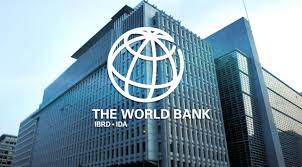The World Bank Group has reported a significant rise in the number of adults using financial accounts to save in Nigeria and other developing countries, marking the fastest growth in formal savings in more than a decade. This was disclosed in the latest Global Findex 2025 report, the World Bank’s flagship publication on financial inclusion trends.
According to the multilateral institution, account ownership in sub-Saharan Africa climbed to 58 per cent of adults in 2024, up from 49 per cent in 2021. The surge is largely attributed to the increasing use of mobile money accounts, which are now at the highest levels globally. In particular, 10 per cent of adults in developing economies now save through mobile money accounts, a five percentage point rise from 2021.
The report noted that 40 per cent of adults in developing countries saved through formal financial accounts in 2024, reflecting a 16 percentage point increase since 2021—the fastest growth rate in over ten years. In sub-Saharan Africa, formal savings rose by 12 percentage points to 35 per cent of adults, underlining the region’s expanding financial inclusion landscape.
World Bank Group President Ajay Banga described the momentum as transformative for economies and individuals. “Financial inclusion has the potential to improve lives and transform entire economies. Digital finance can convert this potential into reality, but several ingredients need to be in place,” Banga said. He added that the World Bank is helping countries establish digital IDs, social protection programs, modernized payment systems, and supportive regulatory frameworks to sustain the growth of financial inclusion.
The World Bank emphasized that increased formal savings bolster national financial systems by providing more capital for investments, innovation, and economic growth, which is crucial for countries like Nigeria where access to credit and capital remains a challenge.
Bill Gates, Chair of the Gates Foundation and a key supporter of the Global Findex, noted that this progress provides more people, especially women and previously excluded populations, the financial tools to invest in their futures and build resilience. “The case for investing in inclusive financial systems, digital public infrastructure, and connectivity is clear—it’s a proven path to unlocking opportunity for everyone,” Gates said.
The report also revealed that nearly 80 per cent of adults globally now have a financial account, up from 50 per cent in 2011. Yet, about 1.3 billion adults still lack access to financial services, though 900 million of them own mobile phones, including 530 million with smartphones. This indicates a substantial opportunity for further growth in digital financial services.
In addition, digital merchant payments are becoming more common across developing countries. In 2024, 42 per cent of adults in low- and middle-income countries made digital payments in-store or online, up from 35 per cent in 2021. The report suggests that expanding systems like India’s UPI or Brazil’s PIX, which enable instant money transfers, could help bridge the remaining financial inclusion gaps.
The Global Findex 2025 also highlighted progress in narrowing the gender gap in financial access. Globally, 77 per cent of women now own a financial account, compared to 81 per cent of men. In low- and middle-income countries, women’s account ownership nearly doubled from 37 per cent in 2011 to 73 per cent in 2024, a major stride toward gender parity in financial services.
However, the report warned about emerging risks linked to the rise of digital financial services. Although 86 per cent of adults globally own a mobile phone, only half use a password or security feature to protect their devices, exposing them to digital fraud risks.
Regionally, the report provided additional insights:
- Europe leads developing economies in internet usage and social media engagement, with 94 per cent mobile phone ownership.
- In Latin America and the Caribbean, around 70 per cent of adults have a financial account, with over half using digital payment methods.
- The Middle East and North Africa saw account ownership rise to 53 per cent from 45 per cent in 2021, and formal savings increased to 17 per cent of adults in 2024, up from 11 per cent in 2021.
- In South Asia, nearly 80 per cent of adults own an account, with India contributing significantly to this rate, where 90 per cent of men and women own accounts, and 65 per cent own smartphones.
The Global Findex Digital Connectivity Tracker 2025, released alongside the report, underscores the crucial link between mobile connectivity and financial access, especially in regions like sub-Saharan Africa where mobile money continues to drive financial inclusion.
